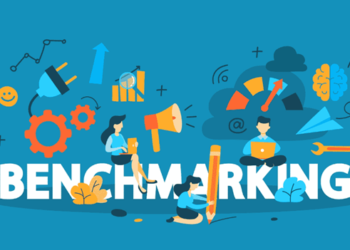In today’s digital world, speed is everything. AI and automation are adopted, primarily, to accomplish tasks faster and faster. The customer, in turn, doesn’t just like near-instant results, but demands it.
This puts a lot of pressure on businesses, but thanks to technological advancements, it doesn’t have to put your company under pressure. Instead, it just means you need to adopt a new approach.
For those who deal with multiple events at once, for example, the solution is to invest in event driven architecture.
EDA 101: Everything You Need to Know
Event driven architecture (EDA) is how you can make your business more flexible and efficient so that it can finally handle and process real-time data. It’s how you can enjoy real-time analytics, how you can optimize your Internet of Things infrastructure, manage financial systems and even handle multiple player actions if your business offers gaming as a life service.
There are so many different applications for EDA. Of course, it won’t be a good fit for every business, but if you’re dealing with untold amounts of data, especially if it needs to be dealt with in real-time, then EDA can be just what your business needs.
Investing in EDA can help handle increased workloads, make your system more flexible, and prepare it for instant responses. This helps you handle multiple user events at once, without manual interference to boost uptimes for users.
It’s a natural fit for any microservice business, but that doesn’t mean it’s a seamless fit. At least, not without knowing the common challenges plaguing the integration process, and how you can best fix or avoid them.
Common EDA Integration Challenges (and How to Overcome Them)
Needing EDA, however, and getting it to work are separate concerns. If you want to successfully implement event driven architecture in your business, you’ll first want to be aware of the most common challenges, and how to overcome them:
- Data Challenges
In order to successfully react to the data inputs, the data itself needs to be accurate, consisted, and synchronised across your systems. This can become a big problem for large enterprise businesses, particularly if you are dealing with data inputs on a global scale.
The solution is to get your data in order. Start first by using a data fabric solution to collect all of your data together under one roof. You can then sort the information, clear it up, and organize it so that your systems can work easier. Part of this process will need to include developing protocols so all future data ingestion is automatically organized without your input.
You’ll then need to use a synchronisation mechanism, like distributed ledger technology (DLT) or change data capture (CDC) tool, which works to track data changes and updates all relevant files.
Combined, you can have one single source of truth that is specifically ready for handling multiple events.
- Fault Tolerance Issues
A large-scale, multi-event system can topple like a house of cards if you aren’t careful, or prepared. That’s why you must work on building redundancy and failover mechanisms into your framework.
One of the biggest tolerance issues you’ll face is repeat event processes. The good news is that avoiding these issues can be as simple as using a cloud-based EDA platform, as many have built-in tolerance and disaster recovery features to avoid disruptions to your customers.
- Security and Privacy
The problem with so much data is that it opens up loop holes and security risks. Data also paints a target on your back. Criminals may steal it to sell on to your competition, to other hackers (who can then use your collected user data to target individuals on a devastating scale), or may hold your system hostage.
All of these risks are devastating for businesses. Ignoring issues can result in heavy fines, lawsuits, and mass customer drop-offs if your data is stolen. If it’s been held hostage, then you may wake up to find everything deleted with no recovery.
The best way to avoid these issues is to invest in all-around data protection practices, and to safeguard your endpoints. Endpoint security works to secure devices in the Internet of Things, and any user-owned device that accesses your network by implementing access control limits.
You’ll also want to encrypt data as it’s in transit, and then again at rest. This keeps information anonymised even if there’s a breach.
- EDA and Legacy System Challenges
In the grand scheme of things, EDA is a very new technology. This can pose challenges when trying to integrate it into older legacy systems, particularly if they haven’t been regularly updated to meet current demands.
The best way to deal with these integration challenges is to use API gateways. These gateways can bridge the gap between your legacy system and EDA, giving it a common ground or even translating data so that the systems can work together. If even APIs aren’t enough, however, this may be a sign that your legacy system is far too outdated for the modern world, and likely needs modernisation.
If there are hardware issues, adaptors and connectors are a simple but effective solution.
- Management Challenges
Who is in charge of your EDA? Who’s responsible for it? Management challenges can leave your system abandoned, directionless, and left to its own devices. This is how you will add a system that slowly breaks down and becomes a casualty for the rest of your system.
EDAs are also massive, meaning you’ll need to break them down into smaller, more manageable components to solve this management problem. Alternatively, you can use a managed service to take a lot of the heat off of your internal teams.
- EDA Suitability
Not every system will suit a full-fledged EDA. That’s why it’s important to use test-driven development to create a mock-up before you invest in an EDA. Choose a small, isolated system that you can put through the mock trial, set your KPIs, and measure the results. If your system works faster and more intuitively to real-time events, then you can safely work towards wider EDA adoption.
David Prior
David Prior is the editor of Today News, responsible for the overall editorial strategy. He is an NCTJ-qualified journalist with over 20 years’ experience, and is also editor of the award-winning hyperlocal news title Altrincham Today. His LinkedIn profile is here.










































































